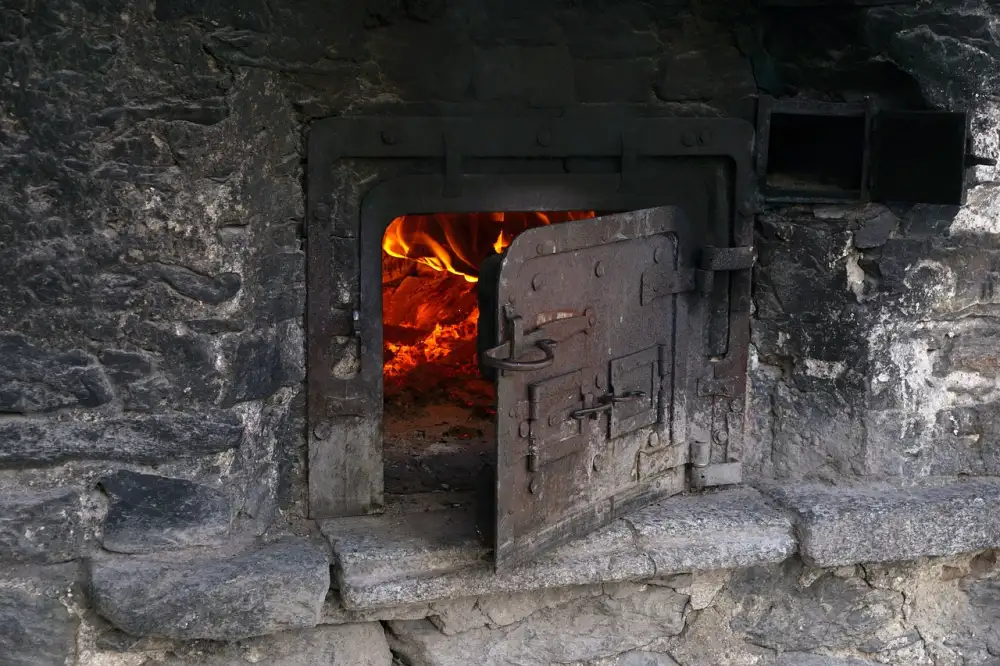Mastering the Art of Cooking: A Step-by-Step Guide on How to Use a Convection Oven at Home

Convection ovens have become increasingly popular in modern kitchens, revolutionizing the way we cook. Unlike traditional ovens, which rely on radiant heat, convection ovens use a fan to circulate hot air evenly throughout the cooking chamber. This results in faster and more even cooking, with dishes that are perfectly browned on the outside and moist on the inside. Whether you're a seasoned chef or an amateur cook, mastering the art of cooking with a convection oven can elevate your culinary skills to new heights. In this step-by-step guide, we will explore the basics of convection cooking and provide useful tips for using your convection oven at home. So let's dive in and discover how to make the most out of this incredible kitchen appliance!
Understanding the Basics of Convection Cooking
Convection cooking is a method that utilizes the circulation of hot air inside the oven to cook food more evenly and efficiently. Unlike traditional ovens, which rely on radiant heat, convection ovens have a fan that helps distribute the heat evenly throughout the cooking chamber.
The circulating hot air in a convection oven speeds up the cooking process by transferring heat more quickly to the food. This results in faster cooking times and can also lead to more even browning and crisping of foods.
One key aspect of convection cooking is understanding how it affects cooking times and temperatures. Because convection ovens cook food faster than traditional ovens, it is important to adjust both the time and temperature accordingly. In general, you can reduce the temperature by about 25 degrees Fahrenheit (or 15 degrees Celsius) and decrease the cooking time by about 25%.
It's also important to note that convection cooking may not be suitable for all types of dishes. Delicate baked goods, such as soufflés or custards, may not fare well in a convection oven due to the strong airflow. However, it is perfect for roasting meats, vegetables, and even baking cookies or bread.
By understanding these basics of convection cooking, you can make the most out of your convection oven and elevate your culinary skills in no time.
Preheating Your Convection Oven
Preheating your convection oven is an essential step to ensure optimal cooking results. Unlike traditional ovens, convection ovens rely on the circulation of hot air to cook food evenly and efficiently. To preheat your convection oven, start by setting the desired temperature according to the recipe or cooking instructions. Allow the oven to heat up for about 10-15 minutes before placing your food inside. This will ensure that the oven reaches the desired temperature and that your food cooks evenly from the start. Remember, preheating is crucial for achieving consistent and delicious results with your convection oven.
Adjusting Cooking Time and Temperature
One of the key benefits of using a convection oven is its ability to cook food faster and more evenly. However, this means that you will need to make some adjustments to your cooking time and temperature compared to traditional ovens.
When using a convection oven, it is generally recommended to reduce the cooking temperature by about 25 degrees Fahrenheit (or 15 degrees Celsius) compared to what is called for in a recipe. This is because the hot air circulation in a convection oven cooks food faster and more efficiently.
In terms of cooking time, you can also expect a reduction of about 25% when using a convection oven. For example, if a recipe states that you should bake something for 40 minutes in a conventional oven, you would only need around 30 minutes in a convection oven.
However, it's important to note that every convection oven is different, so these adjustments may vary slightly depending on your specific model. It's always best to consult your oven's manual or do some trial and error with different recipes until you find the perfect cooking time and temperature for your dishes.
By adjusting the cooking time and temperature accordingly, you can ensure that your food comes out perfectly cooked every time. So don't be afraid to experiment and find what works best for you in mastering the art of cooking with a convection oven.
Using the Convection Setting for Baking
When it comes to baking in a convection oven, the convection setting can be a game-changer. This setting utilizes the fan and exhaust system to circulate hot air evenly throughout the oven, resulting in perfectly baked goods.
To start, preheat your convection oven to the desired temperature. The convection setting typically requires a slightly lower temperature than traditional baking. It's recommended to reduce the temperature by about 25 degrees Fahrenheit or 15 degrees Celsius.
Next, choose the appropriate baking pan. Opt for light-colored pans as they reflect heat better and promote even browning. Avoid using dark or glass pans as they can absorb too much heat and cause uneven baking.
Once your oven is preheated and your batter or dough is ready, place your pan on the center rack of the oven. Make sure there is enough space around the pan for proper air circulation.
Keep in mind that due to the increased airflow in a convection oven, baking time may be reduced compared to conventional ovens. Start checking for doneness a few minutes earlier than you normally would. It's important to rely on visual cues such as golden brown color and a toothpick coming out clean rather than solely relying on suggested baking times.
During baking, avoid opening the oven door frequently as this can disrupt the airflow and affect your results. If you need to check on your baked goods, do so quickly and close the door promptly.
Lastly, remember that different recipes may require adjustments when using a convection oven. Keep track of any modifications made during each bake so you can fine-tune your technique over time.
By using the convection setting for baking in your convection oven, you'll achieve consistent and professional-quality results every time. So go ahead, experiment with your favorite recipes and elevate your baking game!
Roasting and Broiling in a Convection Oven
Roasting and broiling are two popular cooking methods that can be enhanced with the use of a convection oven. When roasting meats or vegetables, the hot air circulation in a convection oven ensures even browning and crispy exteriors. To achieve the best results, place your food on a roasting rack or baking sheet to allow for proper airflow.
When broiling in a convection oven, the fan helps to distribute heat evenly, resulting in perfectly cooked and caramelized dishes. For optimal broiling, adjust the rack position to ensure that your food is close enough to the heating element without being too close.
Remember to keep an eye on your food as it cooks since convection ovens tend to cook faster than traditional ovens. Use a meat thermometer to ensure that meats are cooked to the desired internal temperature.
By utilizing the roasting and broiling functions of your convection oven, you can elevate your culinary creations to new heights of flavor and texture. Experiment with different recipes and techniques to discover the endless possibilities that await you in mastering the art of cooking with a convection oven.
Tips for Properly Using a Convection Oven
1. Use the Right Cookware: Opt for shallow pans and baking sheets with low sides to allow for proper air circulation. Avoid covering dishes with foil as it can disrupt the convection process.
2. Adjust Cooking Times: Since convection ovens cook food faster, reduce cooking times by 25%. Keep an eye on your dish to prevent overcooking.
3. Monitor Temperatures: Lower the recommended temperature by 25°F when using a convection oven. This ensures even cooking and prevents burning.
4. Rotate Dishes: To ensure even browning, rotate your dishes halfway through the cooking process. This helps achieve consistent results.
5. Avoid Overcrowding: Leave enough space between dishes to allow hot air to circulate freely. Overcrowding can lead to uneven cooking and longer cook times.
6. Check for Doneness: Use a reliable meat thermometer or toothpick test to check if your food is cooked thoroughly. This prevents undercooked or overcooked meals.
7. Experiment and Adjust: Every convection oven is different, so don't be afraid to experiment with different settings and temperatures until you find what works best for you.
Remember, practice makes perfect when it comes to using a convection oven. With time and experience, you'll become adept at harnessing its power to create delicious meals that will impress your family and friends!
Cleaning and Maintenance of Your Convection Oven
Cleaning and maintaining your convection oven is essential for ensuring its longevity and optimal performance. After each use, allow the oven to cool down before cleaning. Start by removing any food debris or spills with a damp cloth or sponge. For stubborn stains, use a mild detergent or baking soda paste. Avoid using abrasive cleaners or scrub brushes that could damage the oven's interior.
Regularly clean the oven racks and trays using warm soapy water or a dishwasher if they are dishwasher-safe. If there are removable parts in your convection oven, such as a crumb tray or drip pan, make sure to clean them regularly as well.
To prevent odors and grease buildup, it's recommended to periodically clean the oven's interior with a mixture of vinegar and water or a specialized oven cleaner. Be sure to follow the manufacturer's instructions when using any cleaning products.
Don't forget to clean the exterior of your convection oven too! Wipe it down with a damp cloth and mild detergent, avoiding harsh chemicals that may damage the finish.
Lastly, remember to check and replace any worn-out gaskets or seals to ensure proper insulation and heat distribution.
By following these cleaning and maintenance practices, you can keep your convection oven in excellent condition, allowing you to continue mastering the art of cooking with ease.
In conclusion, mastering the art of cooking with a convection oven can greatly enhance your culinary skills and elevate your food experience. By understanding the basics of convection cooking, preheating the oven properly, and adjusting cooking time and temperature, you can achieve perfectly cooked dishes every time. Whether you're baking, roasting, or broiling, utilizing the convection setting will ensure even heat distribution and faster cooking times. Remember to follow the tips for proper usage and maintain your oven regularly for optimal performance. With practice and experimentation, you'll soon become a pro at using a convection oven to create delicious and impressive meals. So go ahead and unleash your inner chef with this versatile kitchen appliance!
Published: 03. 01. 2024
Category: Home



